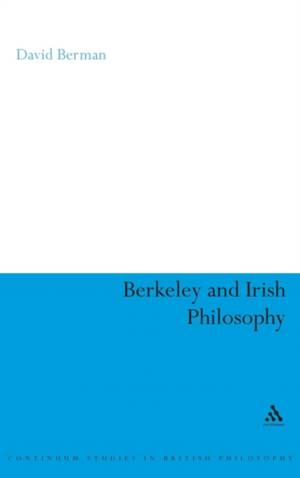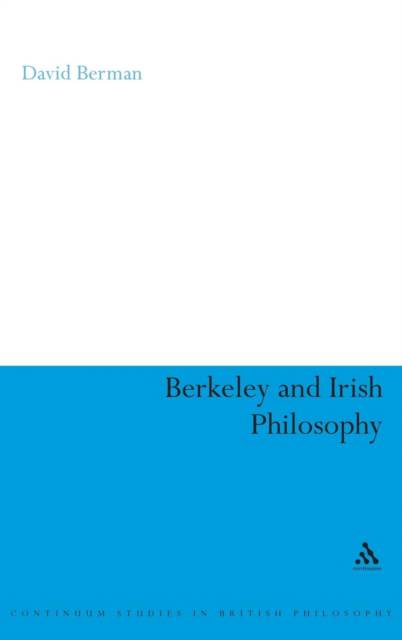
Bedankt voor het vertrouwen het afgelopen jaar! Om jou te bedanken bieden we GRATIS verzending (in België) aan op alles gedurende de hele maand januari.
- Afhalen na 1 uur in een winkel met voorraad
- In januari gratis thuislevering in België
- Ruim aanbod met 7 miljoen producten
Bedankt voor het vertrouwen het afgelopen jaar! Om jou te bedanken bieden we GRATIS verzending (in België) aan op alles gedurende de hele maand januari.
- Afhalen na 1 uur in een winkel met voorraad
- In januari gratis thuislevering in België
- Ruim aanbod met 7 miljoen producten
Zoeken
Omschrijving
The first essay in David Berman's new collection examines the full range of Berkeley's achievement, looking not only at his classic works of 1709-1713, but also Alciphron (1732) and his final book, the enigmaic Siris (1744). Item two examines a key problem in Berkeley's New Theory of Vision (1709): why does the moon look larger on the horizon than in the meridian? The third item criticizes the view, still uncritically accepted by many, that Berkeley's attacks on materialism are levelled against Locke.
Part 2 opens with Berman's two essays of 1982 - the first to show that Berkeley came from a rich and coherent Irish philosophical background. Next comes a discussion of the link between Berkeley and Francis Hutcheson, and particularly their answers to the Molyneux problem, which Berman takes to be the root problem of Irish philosophy.
The fourth essay looks at the impact of the golden age Irish philosophy on eighteenth-century American philosophy, where, again, Berkeley has a central position. The last item examines Berkeley's influence on Samuel Beckett.
Part 3 shows the many-sidedness of Berkeley's career, which is missed by those who concentrate exclusively on his work of 1709-1713. Each item here presents new material on Berkeley's life, or on his works and thought; most of these are new letters, not included in the Luce-Jessop edition of the Works of Berkeley. This section, therefore, can be seen a supplement to volumes 8 and 9 of the Works and also to Luce's Life of Berkeley.
Part 2 opens with Berman's two essays of 1982 - the first to show that Berkeley came from a rich and coherent Irish philosophical background. Next comes a discussion of the link between Berkeley and Francis Hutcheson, and particularly their answers to the Molyneux problem, which Berman takes to be the root problem of Irish philosophy.
The fourth essay looks at the impact of the golden age Irish philosophy on eighteenth-century American philosophy, where, again, Berkeley has a central position. The last item examines Berkeley's influence on Samuel Beckett.
Part 3 shows the many-sidedness of Berkeley's career, which is missed by those who concentrate exclusively on his work of 1709-1713. Each item here presents new material on Berkeley's life, or on his works and thought; most of these are new letters, not included in the Luce-Jessop edition of the Works of Berkeley. This section, therefore, can be seen a supplement to volumes 8 and 9 of the Works and also to Luce's Life of Berkeley.
Specificaties
Betrokkenen
- Auteur(s):
- Uitgeverij:
Inhoud
- Aantal bladzijden:
- 248
- Taal:
- Engels
- Reeks:
Eigenschappen
- Productcode (EAN):
- 9780826485908
- Verschijningsdatum:
- 17/10/2005
- Uitvoering:
- Hardcover
- Formaat:
- Genaaid
- Afmetingen:
- 160 mm x 242 mm
- Gewicht:
- 571 g

Alleen bij Standaard Boekhandel
+ 780 punten op je klantenkaart van Standaard Boekhandel
Beoordelingen
We publiceren alleen reviews die voldoen aan de voorwaarden voor reviews. Bekijk onze voorwaarden voor reviews.









